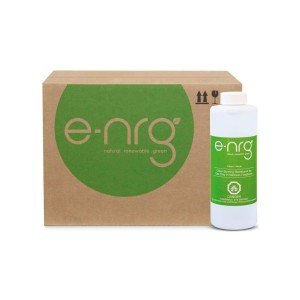In recent years, the modern home décor landscape has seen a remarkable transformation, especially in the realm of indoor heating solutions. Ventless fireplaces, often considered an aesthetic addition to any living space, have gained popularity for their ability to provide warmth and ambiance without the need for a traditional chimney. At the heart of this innovation lies a unique fuel source — premium bioethanol. This guide delves into the benefits, uses, and considerations surrounding premium bioethanol fuel, especially in ventless fireplaces.
What is Bioethanol Fuel?
Bioethanol is a renewable energy source derived from organic materials — including plant matter and agricultural waste — that have gone through cellular fermentation. The production process involves converting sugars and starches from crops into ethanol, which is further purified to create high-quality bioethanol fuel.
Bioethanol fuel is primarily used in ventless fireplaces because it burns cleanly, emitting only carbon dioxide and water vapor when combusted. This contrasts sharply with traditional fossil fuels, which release a multitude of harmful emissions into the atmosphere.
Benefits of Premium Bioethanol Fuel
1. Clean Burning
One of the primary advantages of premium bioethanol fuel is its clean burning nature. Since it produces minimal pollutants, it is an environmentally friendly option for heating homes. Homeowners can enjoy the soothing glow of a fire without compromising indoor air quality.
2. No Ventilation Required
Ventless fireplaces are designed to function without the need for venting. This means that they can be installed in almost any room, adding a cozy aesthetic to spaces that might otherwise be unsuitable for traditional fireplaces.
3. Easy to Use
Premium bioethanol fuel is incredibly user-friendly. It typically comes in easy-to-pour containers and ignites quickly, allowing users to start and extinguish the flames with minimal effort.
4. Sustainable Choice
By choosing bioethanol, consumers are supporting a sustainable fuel source that contributes to reduced greenhouse gas emissions. It represents a progressive shift away from finite fossil fuels towards renewable energy alternatives.
5. Versatile Decor Options
Ventless fireplaces range from minimalist designs to elaborate, artistic pieces. With premium bioethanol fuel, users aren’t limited by traditional fireplace layouts and can enhance their home’s décor in innovative ways.
Considerations for Using Bioethanol Fuel in Ventless Fireplaces
While premium bioethanol fuel has several advantages, it is crucial to acknowledge some considerations:
1. Heat Output
Although bioethanol burns cleanly, its heat output may not be sufficient for larger spaces or extreme cold weather. Some users may require supplementary heating devices.
2. Cost
Premium bioethanol fuel tends to be more costly than traditional heating options. Homeowners should factor this into their budgeting when considering a ventless fireplace.
3. Fuel Consumption
Bioethanol fireplaces consume fuel at different rates, depending on their design and output. Homeowners should regularly assess their consumption to maintain sufficient fuel levels and avoid fluctuations in cost.
4. Fire Safety
As with any open flame, safety is paramount. Users should always follow manufacturer guidelines and maintain a safe distance from flammable materials.
5. Storage
Proper storage is required for bioethanol fuel, as it is flammable. Users should keep fuel in designated, clear containers that are stored away from heat sources and out of reach of children.
FAQs about Premium Bioethanol Fuel and Ventless Fireplaces
Q1: How do I know if my fireplace is ventless?
A: Ventless fireplaces are designed to operate without the need for a chimney or a flue. If your fireplace can burn bioethanol fuel and does not have any vents, it is likely ventless.
Q2: Is bioethanol fuel safe to use indoors?
A: Yes, when used in accordance with manufacturer instructions, premium bioethanol fuel is safe for indoor use. However, adequate ventilation and adherence to safety precautions are recommended.
Q3: How long does bioethanol fuel burn?
A: The burn time of bioethanol fuel can vary based on the size of the burner and the amount of fuel used. On average, a liter of bioethanol can burn for about 3 to 4 hours.
Q4: Can I use regular ethanol in my ventless fireplace?
A: It is recommended to use only premium bioethanol fuel specifically designed for fireplaces. Regular ethanol may contain additives or impurities that could harm your fireplace or produce harmful emissions.
Q5: Can I cook using bioethanol?
A: While bioethanol is primarily used as a fuel for heating, some specialized cooking appliances utilize bioethanol. However, standard ventless fireplaces should not be used for cooking.
As the world increasingly shifts toward more sustainable energy solutions, premium bioethanol fuel stands out as an elegant and responsible choice for those looking to enhance their indoor ambiance with ventless fireplaces. Its clean-burning, renewable nature makes it a compelling option for any modern household. However, it is essential for users to remain informed about its usage, safety considerations, and cost implications. With this knowledge, homeowners can fully appreciate the benefits while enjoying the warmth and charm of a bioethanol flame. The future of indoor heating is not only stylish but also sustainable — a win-win for both the planet and home aesthetics.




